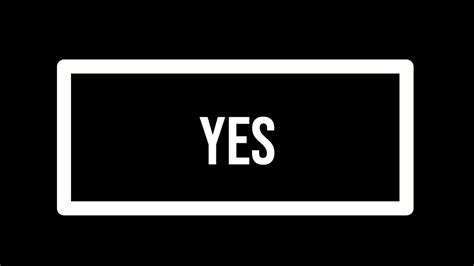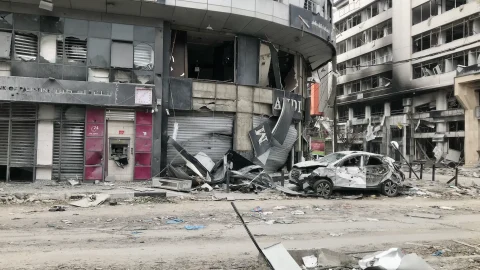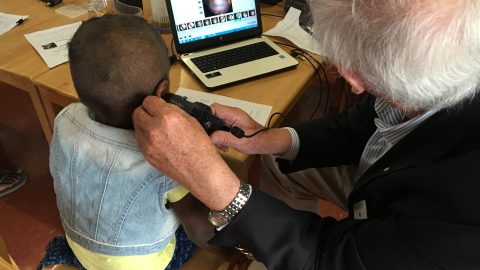So, let’s look at the No case. Does it stack up?
You will find below the Summary of the No case as set out in the No case pamphlet on the Australian Electoral Commission website. It hasn’t been fact-checked by the AEC as that’s not a function of the AEC, and is included here, as in the pamphlet, as submitted by the No campaign.
If you read it inquiringly, like you would an advertisement, you’ll quickly spot the No campaign’s key words, sound bites and talking points that you’ll be hearing over and over again until Referendum Day – Risky, Unknown, Divisive and Permanent.
I join issue on the first three, because I don’t believe they are correct, and support the last, the permanent inclusion of the Voice in our Australian Constitution.
On one issue, I think the the No campaigners and the Yes campaigners are in furious agreement – the Voice is an important Constitutional proposal. No doubt about it. It will adjust the historic relationship between Aboriginal and Torres Strait Islanders – our First Nations peoples – and those who are empowered under the Constitution to make laws and administer programs that impact on the lives of First Nations peoples throughout our great Commonwealth.
Government – that is, Parliament and the Executive Government – will henceforth have the opportunity to listen directly to the chosen representatives of First Nations peoples before, not after, making significant decisions affecting them.
While some in our community are fearful of this Constitutional development, forward-looking Australians, who are confident about our country’s identity and its future, are not fearful of the Voice proposal and warmly embrace it, me included.
But first, let’s have a closer look at the No pamphlet’s Reasons To Vote No Summary, amd what it actually says. Here it is.
REASONS TO VOTE NO – A SUMMARY
This Referendum is not simply about “recognition”. This Voice proposal goes much further. If passed, it would represent the biggest change to our Constitution in our history.
If you don’t know, vote no.
RISKY
We all want to help Indigenous Australians in disadvantaged communities. However, this Voice is not the answer and presents a real risk to our system of government.
This Voice specifically covers all areas of “Executive Government”. This means no issue is beyond its reach.
The High Court would ultimately determine its powers, not the Parliament. It risks legal challenges, delays and dysfunctional government.
UNKNOWN
No details have been provided on how members of the Voice would be chosen or how it would operate. Australians are being asked to vote first before these details are worked out.
Australians should have details before the vote, not after.
We don’t know how it will work, we don’t know who will be on it, but we do know it will permanently divide us as Australians.
Some Voice supporters say this would just be a first step to reparations and compensation and other radical changes. So, what would come next?
DIVISIVE
Enshrining a Voice in the Constitution for only one group of Australians means permanently dividing our country.
It creates different classes of citizenship through an unknown body that has the full force of the Constitution behind it. Many Indigenous Australians do not support this.
PERMANENT
Putting a Voice in the Constitution means it’s permanent. We will be stuck with negative consequences.

The Land of his Forefathers, John Barker, 1934. Perth and the Swan from the Scarp.
Now, here’s the Question that you’ll find before you when you enter the voting booth on Referendum Day 2023.
THE QUESTION
A Proposed Law: to alter the Constitution to recognise the First Peoples of Australia by establishing an Aboriginal and Torres Strait Islander Voice.
Do you approve this proposed alteration? YES or NO
And here’s the proposed Alteration
THE ALTERATION
Chapter IX – Recognition of Aboriginal and Torres Strait Islander Peoples
Section 129 – Aboriginal and Torres Strait Islander Voice
In recognition of Aboriginal and Torres Strait Islander peoples as the First Peoples of Australia:
1. There shall be a body, to be called the Aboriginal and Torres Strait Islander Voice;
2. The Aboriginal and Torres Strait Islander Voice may make representations to the Parliament and the Executive Government of the Commonwealth on matters relating to Aboriginal and Torres Strait Islander peoples;
3. The Parliament shall, subject to this Constitution, have power to make laws with respect to matters relating to the Aboriginal and Torres Strait Islander Voice, including its composition, functions, powers and procedures.
Now, let’s look at the words in proposed section 129. They are what this is all about and, really, they’re not all that complicated. You don’t need to be a Constitutional lawyer either to read them or to understand them.
THE LEAD IN WORDS
First, there are the lead in words of section 129 – ‘In recognition of Aboriginal and Torres Strait Islander peoples as the First Peoples of Australia’.
These words simply, but accurately, recognise that Australia’s Indigenous peoples are the First Nations peoples of Australia. We are all aware they occupied the whole of Australia for thousands of years before the arrival of the British in the late 18th and early 19th centuries. On the mainland, Aboriginal peoples are estimated to have done so for more than 60,000 years.
As recognised by the High Court of Australia in Mabo in 1992, Aboriginal and Torres Strait Islanders peoples occupied their countries within the land mass we now call Australia under their own traditional laws and customs. These traditional systems continued to apply after British settlement, although until Mabo they were not recognised under Australia’s imported common law.
PAR 1
Par 1 simply provides that there shall be a ‘body’, that is to say, a group working together, that will be called the ‘Aboriginal and Torres Strait Islander Voice’. Nothing complicated about that.
This body stands outside Parliament and outside Executive Government. It isn’t an ‘institution of Parliament’ as some politicians have incorrectly stated. It has neither the power to enact laws or to administer programs. Those powers belong to Parliament and the Executive Government respectively.
The Voice is but an independent adviser on law making and program delivery. As mentioned below, its advice on how Australian government, in respect of First Nations peoples, might be improved can be considered or ignored by the powers that be.
PAR 2
Par 2 then says what the Voice is all about, what it can do, namely, that it “may” – not “must” – “make representations” – that is, official statements – to Parliament and the Executive “on matters relating to Aboriginal and Torres Strait Islander peoples”.
This is the hope of the Voice. That First Nations peoples across our land, who have been systematically and adversely impacted first by Colonial rule and later by State and Commonwealth rule, will at long last have a say in the way they are governed.
The ‘relating to’ wording – a phrase lawyers are well-versed in – would cover representations about proposed new laws and policies, as well as the administration of existing laws and policies. Again, it’s not complicated.
While the words ‘relating to’ are broad, they are intended to be. And wisely so. There is no overreach issue. It is better to use a broad formula now that can adapt to issues affecting First Nations as they may arise in the future, than to try to define, here in 2023, what matters might be relevant over the long life of the Voice ahead.
Indeed, to have attempted to list precisely just what matters can be the subject of the Voice’s representations would have been positively foolhardy and invited challenges in the High Court to the work of the Voice, something the No campaigners are otherwise concerned to limit.
Commonsense and experience will dictate what matters the Voice makes representations about and what the Parliament and the Executive find particularly helpful to their deliberations and actions.
Nothing in par 2 requires the Parliament or the Executive to take up the representations made by the Voice. If the Voice were to make trivial representations along the lines of the examples some No campaigners have put forward – which one can’t imagine the Voice wasting its time doing – then we can expect the Parliament and the Executive to simply ignore them.
But where representations plainly go to matters affecting First Nations peoples, for example those pertaining to “Closing the Gap”, then one would expect Parliament and the Executive to listen to them quite actively.
This raises an important point touched on earlier. It is one thing for First Nations peoples to be recognised in a formal way with a mention in the country’s Constitution. It is entirely another actually to be heard and listened to by the powers that be when it matters. True ‘recognition’ of First Nations involves those holding and exercising power under our Constitution actively ‘listening’ to what the representatives of First Nations peoples have to say that bears upon their wellbeing. Why wouldn’t we do that? Isn’t that just practising good government in a modern, 21st century, liberal democratic Australian society?
And what’s divisive about it? In my view , there isn’t anything divisive about the Voice. We are here talking, not about refugees who have in modern times arrived in Australia in search of a better life, but about the Indigenous peoples of our nation who have been here, living their lives since time immemorial, and who’ve been so impacted by Colonialism. We are dealing here with a question of First Peoples’ human rights; we are not preferring one class of citizen over another as the No folk unfortunately contend.
The Constitutional recognition proposal is in accord with the UN Declaration on the Rights of Indigenous Peoples and consistent with the International Convention on the Elimination of all forms of Racial Discrimination. It isn’t apartheid, it isn’t racist. It recognises that First Nations peoples the world over have a special place in their national constitutional arrangements.
As I pointed out in my earlier, nationally syndicated, Op-Ed piece, governments, from the very first days of Colonial rule, have consistently failed to conciliate with the original owners of this country. Soon enough after the commencement of Colonial rule, the Colonial belief was that Indigenous people would quietly die out. It didn’t happen.
PAR 3
Par 3 means what it says – ‘The Parliament shall, subject to this Constitution, have power to make laws with respect to matters relating to the Aboriginal and Torres Strait Islander Voice, including its composition, functions, powers and procedures’. Parliament has the power to do these things.
However, these words don’t put Parliament under any obligation to exercise the power and make such laws, although it would be surprising if it didn’t do so relatively soon after a successful YES case.
Whatever laws Parliament does make under par 3 can later be amended as the Voice evolves and becomes an established advisory part of government decision-making processes.
There is also no requirement for Parliament to make laws of a particular kind. The report of Professors Langton and Calma, that too few people seem to have read, would be influential in legislating on composition, selection, and how local and regional groups would feed into the national body. Linda Burney, the Minister for indigenous Australians, recently confirmed this approach in her National Press Club speech when she said ‘The Voice will provide independent advice for better decisions. It will empower local voices. Every state and territory, the Torres Strait Islands and remote communities will be represented. It will be gender balanced and include the views of young people. It will consult with local communities. It will be accountable and transparent. And it will co-operate with existing organisations.’
That’s basically it folks. A modest proposition to introduce a First Nations Voice so our national law makers and government get the benefit of First Nations’ experience and advice either before making or implementing laws that affect First Nations peoples or after they’ve been made and are proving inadequate in achieving their purpose.
FINAL OBSERVATIONS
It should be obvious then that nothing in section 129 gives the Voice a veto over Parliamentary law making or Executive Government’s decision making.
Parliament doesn’t lose its sovereignty as Australia’s supreme law maker.
And First Nations by these arrangements don’t cede their sovereignty to anyone.
On top of that, there is little scope for Constitutional litigation over the new Part 9 and s129 because the new s129 merely facilitates the making of representations and does not mandate procedures or standards. Suggestions that the Voice proposal risks legal challenges are really misleading, as is the idea that government might grind to a standstill because of the new consultation expectations.
The related suggestion that the High Court of Australia and not Parliament will control the Voice’s powers is a misunderstanding of the terms of section 129 and the function of the Voice.
As Brett Walker SC, a leading Constitutional lawyer supporting The Voice, has remarked – “… lawyers in this political debate should not adopt the doomsday borderline approach to predictions of the consequences of the Voice”.
The reason why you place the Voice in the Constitution and not in an ordinary piece of Commonwealth legislation is to avoid the recognition accorded First Nations peoples being either removed totally or watered down by a subsequent Act of Parliament in a subsequent session of Parliament. With Constitutional recognition the interests of First Nations peoples is as guaranteed as it can be. It would take another referendum to remove it.
While some complain of a lack of detail, the fact is we have a very clear understanding from the reports of Professors Langton and Calma about just what the Voice will look like, as Minister Burney explained in her recent National Press Club speech. It is disingenuous of the No campaigners to suggest otherwise. Soon enough after a successful YES vote, legislation for the Voice will be introduced and debated in Parliament in accordance with usual legislative processes and eventually become law.
In my work as a barrister representing Aboriginal and Torres Strait Islander peoples in Native Title Act claims, I was privileged to be welcomed into First Nations societies in Western Australia’s Kimberley, Pilbara and Goldfields regions, as well as in the Torres Strait. Later, as a judge of the Federal Court of Australia until my retirement in 2019, I continued to have a close engagement with First Nations peoples throughout Australia in the course of fulfilling my duties as a member of the Court. In the process I learned much about the effects of Colonialism on Indigenous peoples around the country. I also learned much about the resilience and generosity of First Nations peoples despite the difficult times they have endured over many generations.
In the year 2023, it is time to face up to our vexed and troublesome Colonial history and at last forge a new and lasting relationship between our First Nations peoples and our institutions of government. This is what the Voice seeks to achieve.
From my experience working with First Nations people, I believe the Voice will mark a new beginning in achieving reconciliation throughout our country.
When all is said and done, I consider the assessment of the Voice proposal advanced by Robert French AC, former Chief Justice of Australia, to be compelling – ‘The Voice proposal is a once in a lifetime opportunity for Australia to fill a gaping hole in our Constitution — to recognise our first history and the First Peoples who bear it and the painful legacy of its collision with the second history of colonisation. The high return against low risk is that The Voice will provide a practical opportunity for First Peoples to give informed and coherent and reliable advice to the Parliament and the Executive to assist them in law and policy making in one of the most difficult areas of contemporary government. It empowers First Peoples and the Australian people as a whole to acknowledge, address and move forward from the legacy of their colliding histories.’
* By Michael Barker. The Hon Michael Barker, KC, is a former judge of the Supreme Court of Western Australia and Federal Court of Australia, and is the Editor of Fremantle Shipping News. The painter John Barker is the author’s Great Grandfather.
* You’ll find more Getting The Voice features right here
**Fremantle Shipping News supports the YES campaign
*** Editorial comment in introductory paragraphs by Michael Barker, Editor, Fremantle Shipping News

WHILE YOU’RE HERE –
PLEASE HELP US TO GROW FREMANTLE SHIPPING NEWS
FSN is a reader-supported, volunteer-assisted online magazine all about Fremantle. Thanks for helping to keep FSN keeping on!
** Don’t forget to SUBSCRIBE to receive your free copy of The Weekly Edition of the Shipping News each Friday!







